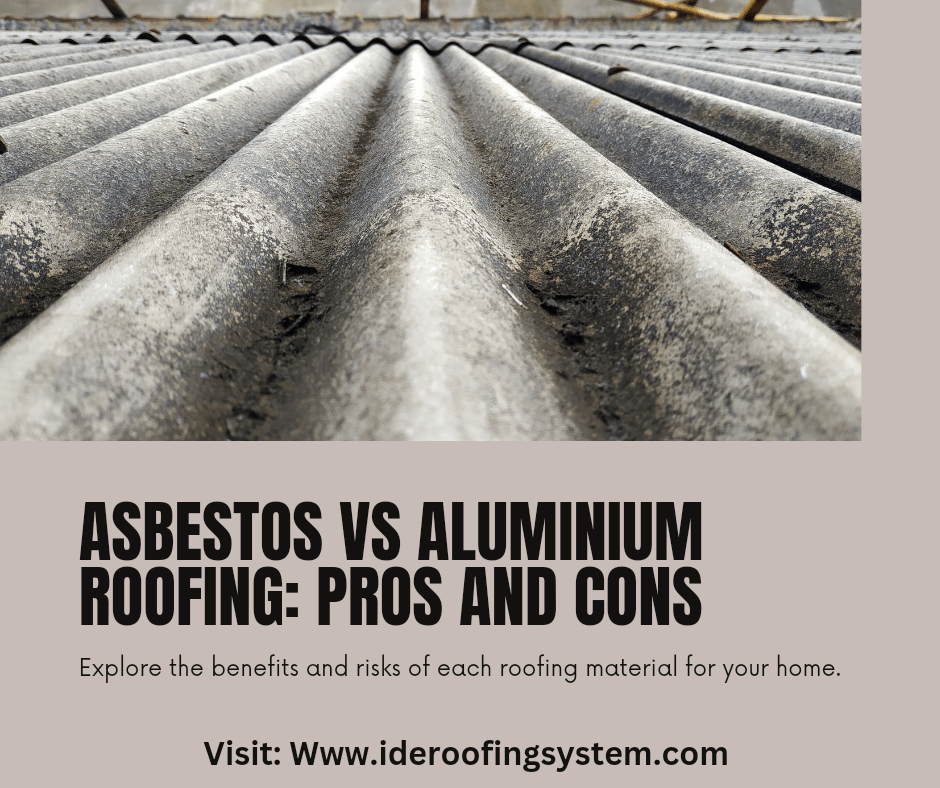Asbestos vs Aluminum Roofing: Which One Should You Choose And Why?
If you are planning to build or renovate a house, one of the most important decisions you have to make is what type of roofing material to use. There are many options available, but two of the most common ones are asbestos and aluminum. Both have their pros and cons, and choosing the right one depends on various factors such as your budget, location, preferences, and environmental impact. In this article, we will compare asbestos and aluminum roofing and help you decide which one is best for your needs.
What is Asbestos Roofing?
Asbestos is a mineral that has been used for centuries as a building material, especially for roofing. It is composed of thin, fibrous crystals that can be woven into fabrics or mixed with cement to form a composite material called asbestos cement. Asbestos roofing is very popular in many parts of the world, especially in developing countries like Nigeria, because of its low cost and high durability.
What are the Benefits of Asbestos Roofing?
Asbestos roofing has several advantages that make it appealing to many homeowners and builders. Some of the benefits are:
- Thermal insulation: Asbestos is a very good thermal insulator and can keep your house cool in summer and warm in winter. This can increase the energy efficiency of your building and reduce your heating and cooling costs.
- Fire resistance: Asbestos is highly resistant to fire and does not burn easily. It can protect your house from flames and sparks, and prevent the spread of fire to other parts of the building.
- Strength: Asbestos forms a very strong material when mixed with cement and can withstand harsh weather conditions such as wind, rain, hail, and snow. It can also resist impact and pressure from falling objects or debris.
What are the Drawbacks of Asbestos Roofing?
Despite its benefits, asbestos roofing also has some serious drawbacks that you should be aware of before choosing it for your house. Some of the drawbacks are:
- Health hazards: Asbestos is seriously hazardous to health, as it comprises of invisible micro particles that can cause life-threatening diseases if inhaled for a long time. These diseases include lung cancer, mesothelioma, asbestosis, and pleural disorders1. Asbestos exposure can occur during the installation, maintenance, or removal of asbestos roofing, or when the roofing is damaged or deteriorated.
- Environmental impact: Asbestos is a non-biodegradable material that can pollute the soil, water, and air if not disposed of properly. It can also contribute to greenhouse gas emissions and climate change if burned or incinerated.
- Maintenance: Asbestos roofing requires regular maintenance and inspection to ensure its safety and performance. It can be vulnerable to corrosion and damage from weathering, ageing, or maintenance work. It can also crack, chip, or break over time, releasing asbestos fibers into the air.
What is Aluminum Roofing?
Aluminum is a metal that has been used for roofing since the 19th century. It is one of the most abundant and recyclable elements on earth, and can be shaped into various forms and styles to suit different architectural designs. Aluminum roofing is widely used in industrial, commercial, and residential buildings, especially in coastal areas, because of its resistance to corrosion and saltwater.
What are the Benefits of Aluminum Roofing?
Aluminum roofing has many advantages that make it a great choice for many homeowners and builders. Some of the benefits are:
- Corrosion resistance: Aluminum is highly resistant to corrosion and well-suited to coastal environments, especially if it is anodized or painted. It can withstand exposure to saltwater, humidity, and chemicals, and prevent rust and decay.
- Lightweight: Aluminum is lightweight and easy to transport and install. It can reduce the load on the roof structure and foundation, and minimize the risk of collapse or damage. It can also save you money on labor and material costs.
- Heat reflection: Aluminum reflects heat and light, which may reduce cooling costs in hot climates. It can also prevent the accumulation of snow and ice on the roof, which can cause leaks and damage.
- Cleanliness: Aluminum roofing is easy to clean and maintain, as it does not attract dirt, dust, or mold. It can also resist stains and fading, and retain its color and shine for a long time.
What are the Drawbacks of Aluminum Roofing?
Although aluminum roofing has many benefits, it also has some drawbacks that you should consider before choosing it for your house. Some of the drawbacks are:
- Cost: Aluminum is more expensive than asbestos and other roofing materials, and may not fit your budget. It can also increase your insurance premiums, as it is more prone to theft and vandalism.
- Durability: Aluminum may dent or scratch easily, especially if it is not coated or protected. It can also be noisy during rain or hail, and may amplify the sound of thunder and lightning.
- Compatibility: Aluminum may not be compatible with some other metals or materials, and may cause galvanic corrosion or electrolysis if in contact with them. Aluminum flashings may also pit and oxidize in salty air, and may need to be replaced more often.
Conclusion
As you can see, asbestos and aluminum roofing have their own pros and cons, and there is no clear winner or loser. The best roofing material for your house depends on your specific needs and preferences, as well as the local climate and regulations. You should also consider the environmental and health impacts of both materials, as well as their durability and performance. You may also want to consult a professional roofing contractor for more advice and guidance. We hope this article has helped you compare asbestos and aluminum roofing and make an informed decision. Thank you for reading!



